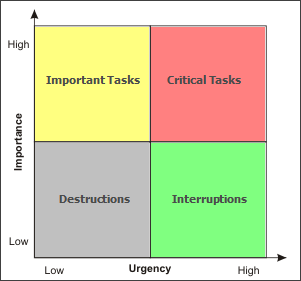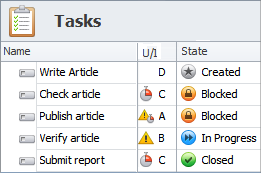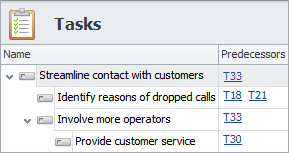Get More from Project Scheduling Software
Project scheduling is a vital process that tries to predict the future. It creates a schedule document that represents the tasks and deliverables that need to be completed to produce the project on time. The process is best managed and tracked with help of project scheduling software, a computer program that lets estimate activity durations, prioritize project tasks, set predecessor-successor dependency, and develop activity schedules.
Need Software for Projects & Tasks?
CentriQS is project & task management software
with all the features you may ever need in one tool
Schedule Activity Durations
Any project is a kind of larger work that consists of smaller activities and tasks that need to be completed. When you begin to schedule your project, first of all you need to identify what activities it is composed of and then estimate time requirements (task duration). By developing a work breakdown structure (WBS) you can define and sequence the project activities. Your WBS refines the scope of work and provides input for estimating activity durations that will then be embedded into your schedule.
The process of estimating activity durations involves a number of techniques to determine work periods needed to complete each activity. Expert judgment, Analogous estimating, Reserve time, Contingency planning are the most popular time estimation methods. With help of project scheduling software you can employ one or another method to estimate task due-dates and completion time.

CentriQS lets you set Estimate, Actual and Remain for tasks to help you schedule your project activities. Estimate helps you set estimated completion time for each task, while Actual indicates the time actually spent on doing the task. Remain shows you how much time is left available till task completion. The project scheduling software lets you use Deviation to help you figure out whether or not your tasks are managed well.
Prioritize Project Activities

Prioritization follows one key principle - "first activity comes first". As a process, prioritization aims to analyze all scheduled activities and their durations to determine how each of them impacts the project and then to rank the activities according to the impact. Activity impact is measured in terms of importance or urgency. Important activities produce an outcome that ensures the achievement of a project objective, while urgent activities require immediate attention and frequently lead to the achievement of a subsequent goal or successor activity.
The Urgent-Important Matrix is a powerful prioritization technique to rank project activities and sequence tasks. The Matrix creates a 4-cell table with the dimensions of Urgency and Importance. The four quadrants of the Matrix rank activities into Important, Critical, Interruptions and Destructions. With help of project scheduling software you can prioritize and rank your project tasks according to this concept.
CentriQS lets you follow the Urgent-Important prioritization technique. For each task you can set "Important", "Urgent", or both. In the Tasks view, the U/I column shows task priorities as grades "A", "B", "C", and "D" which correspond to the quadrants "Important", "Critical", "Interruptions" and "Destructions".

Set Predecessors and Successors
As a rule, project schedules include tasks and activities that are linked to each other by certain type of dependency. A task can be dependent on another task by start or finish time. For example, task 'Submit report' can't start until its predecessor task 'Write report' finishes. Dependency relationships let set predecessors and successors for scheduled tasks and also sequence interrelated project activities.

In CentriQS, you can set predecessors and successors for your tasks and define the sequence of task execution. The software also lets you break down large tasks into smaller sub-tasks and then add all of the tasks to user calendars. You can create multi-level hierarchies and relate tasks to the same project. Hyperlinks will let you relate tasks and schedule items to web pages, files and emails. Links will help you link tasks to multiple projects and other entities available in your database.
Develop Project Activity Schedule
An activity schedule is a time management document that shows how the tasks and events of a project are sequenced and phased over the project lifecycle. This document uses activity priorities and durations as the key factors in setting right job costing and lifecycle phases. It is the desired outcome of the scheduling process.
CentriQS as Project Scheduling Software
As a project manager, you need to take control over developing a project activity schedule and allocating resources. Project scheduling software will help you address this challenging task. In particular, CentriQS lets you add tasks and appointments to user calendars to make it easier for you to plan and manage teams. In Scheduler, you can display your tasks on the timeline view to see their durations and sequences. If needed, you can switch to the monthly, weekly or daily view to focus on particular tasks of certain users.

Prev.: Project Management Software Features for Project Collaboration || Next: Project Tracking Software: Monitor Activities and Control Changes
Next steps
{
Learn FEATURES & SCREENSHOTS
Watch VIDEO OVERVIEW
Visit KNOWLEDGE BASE
DOWNLOAD Free Trial
CONTACT US to get help